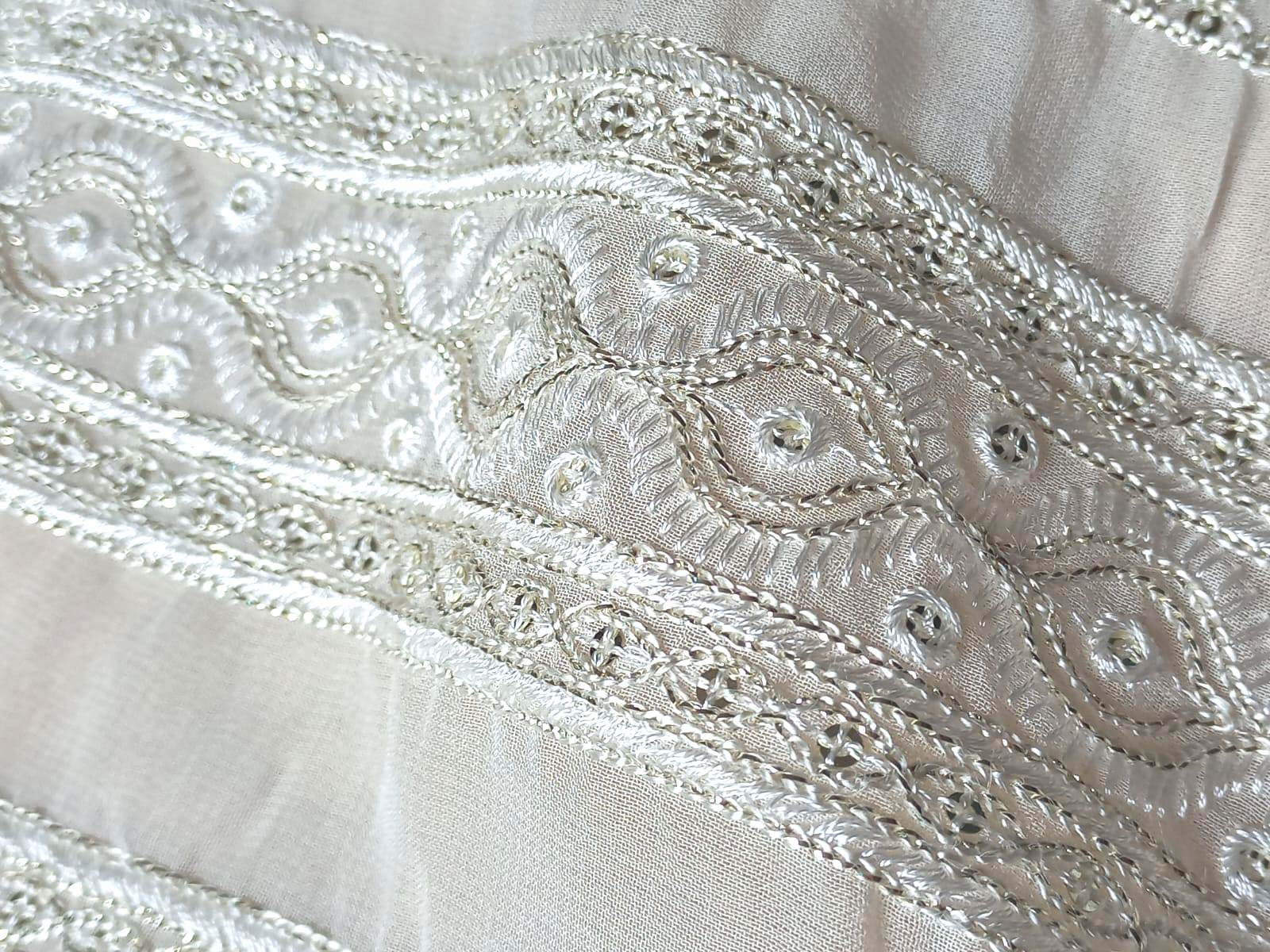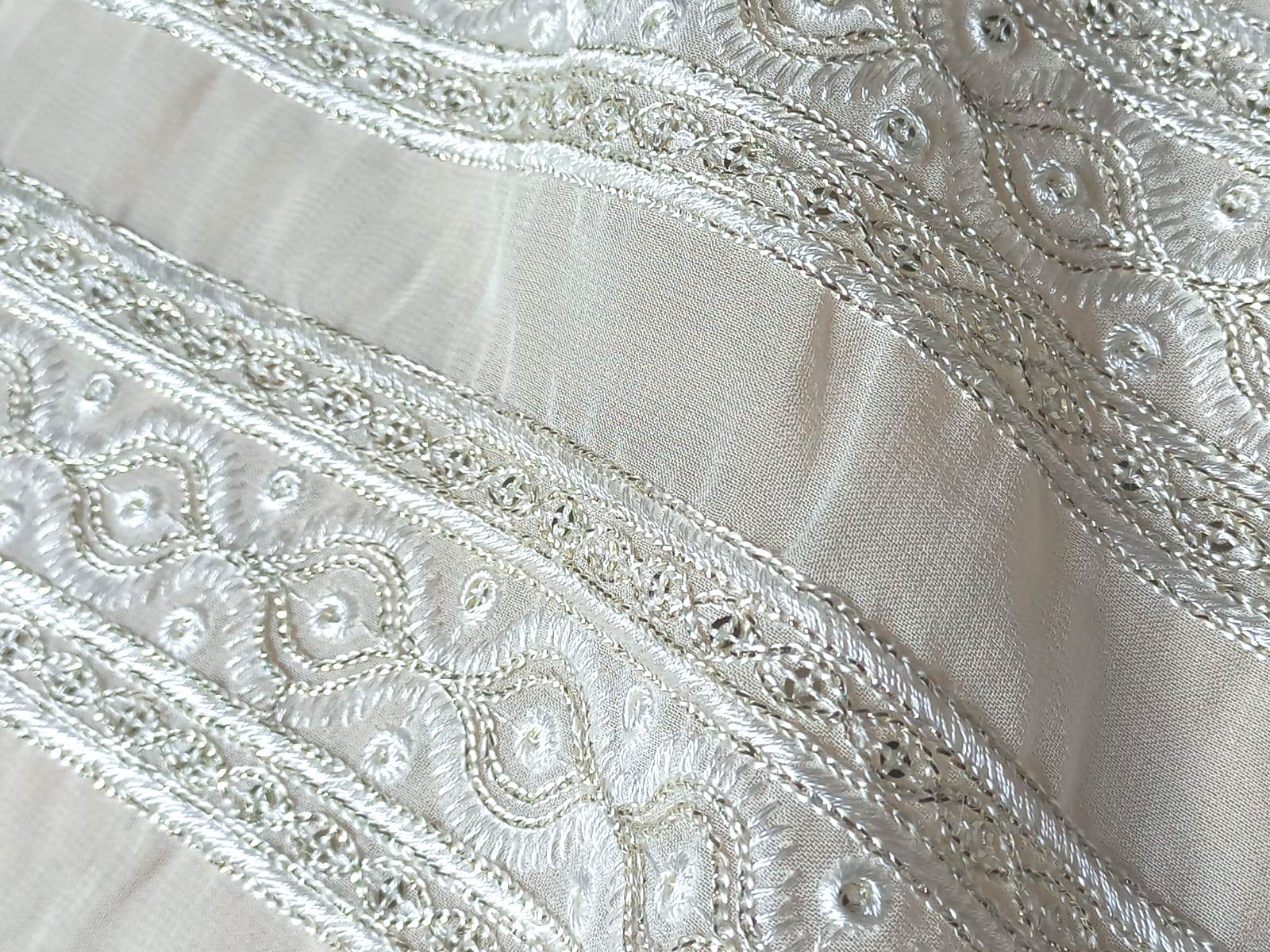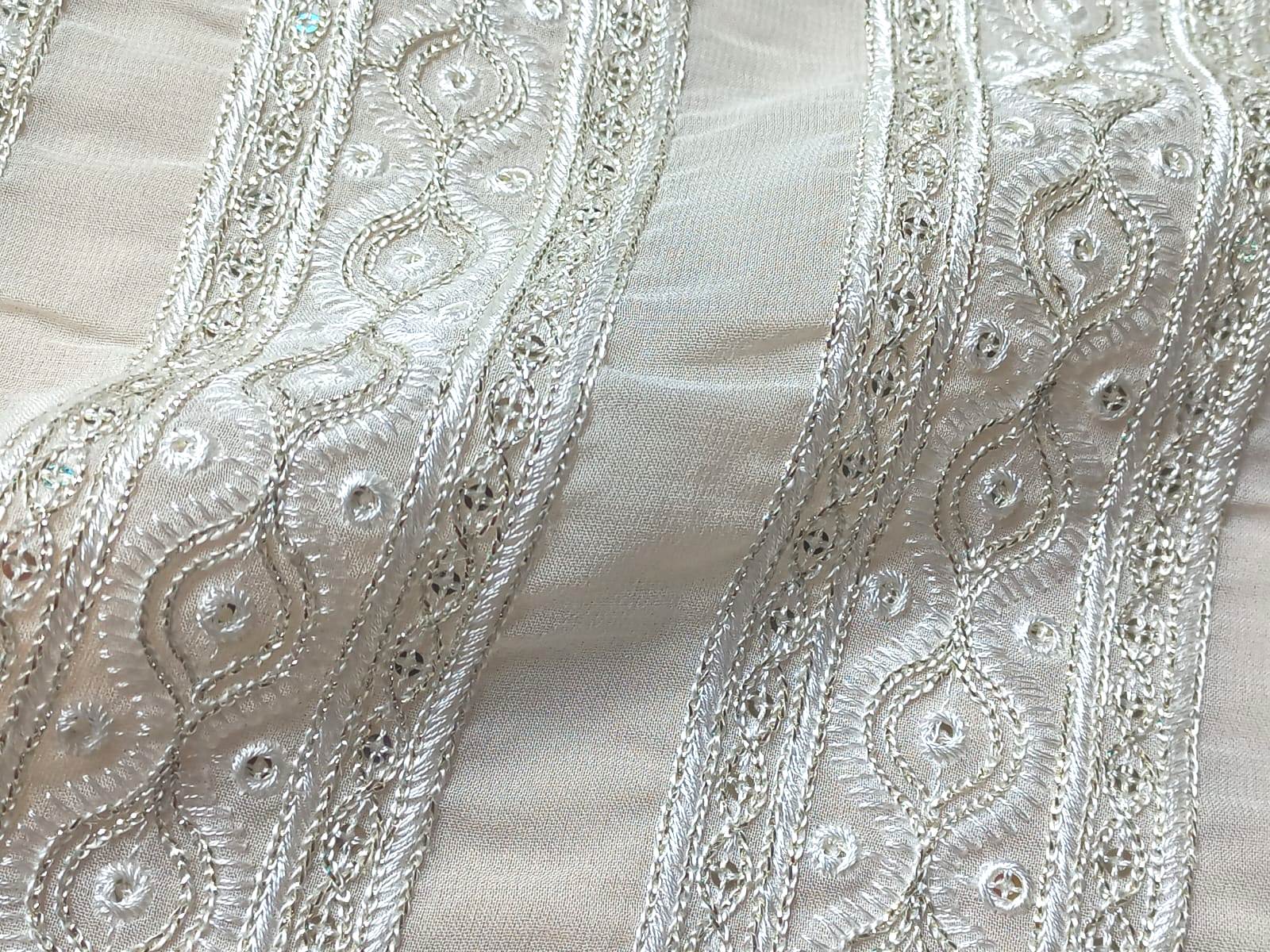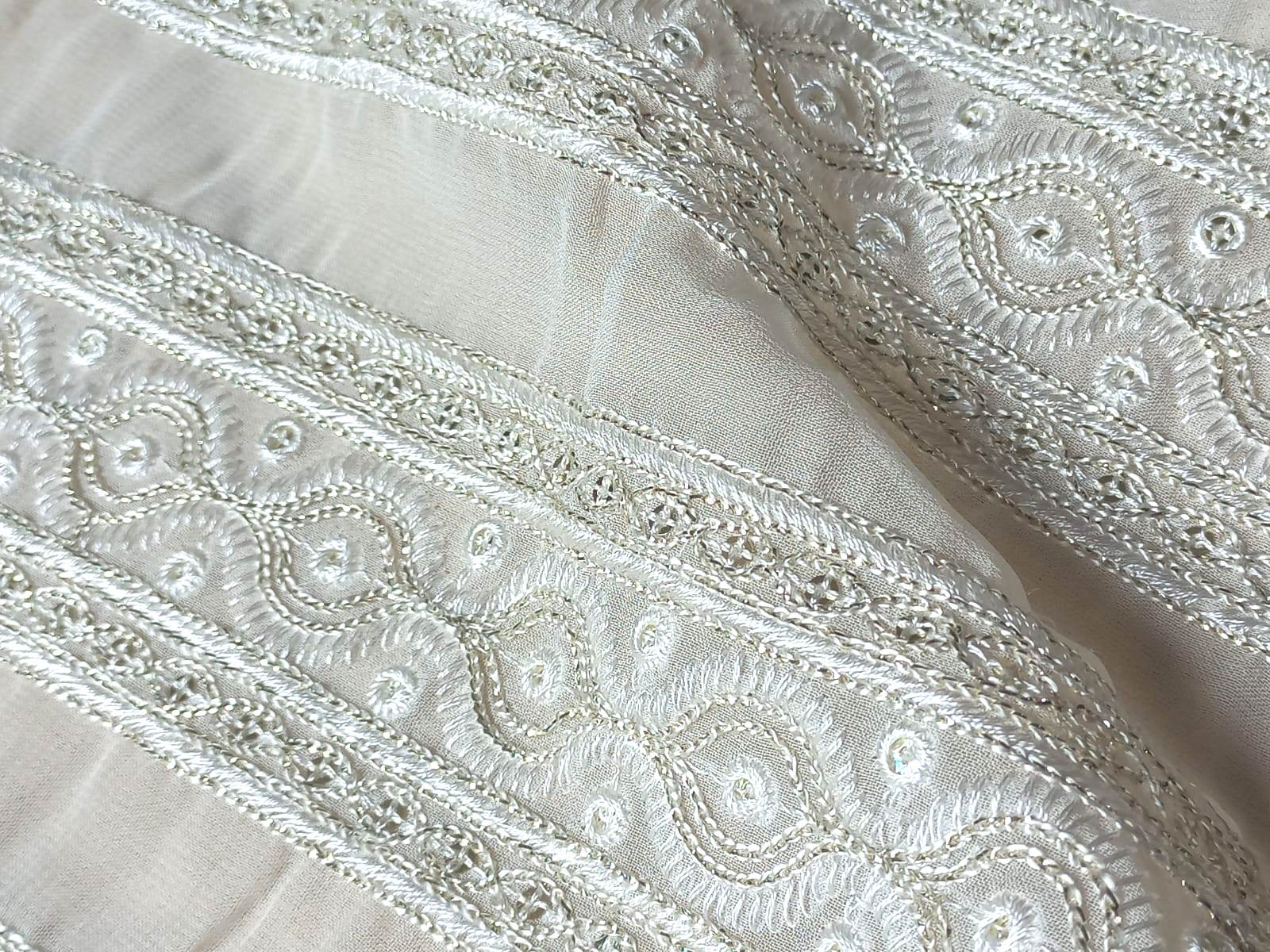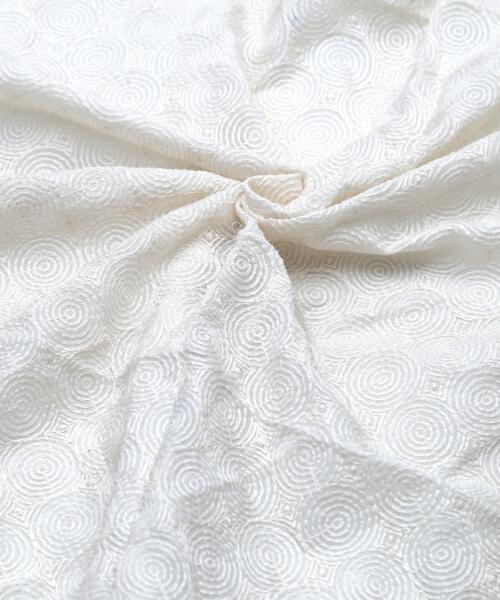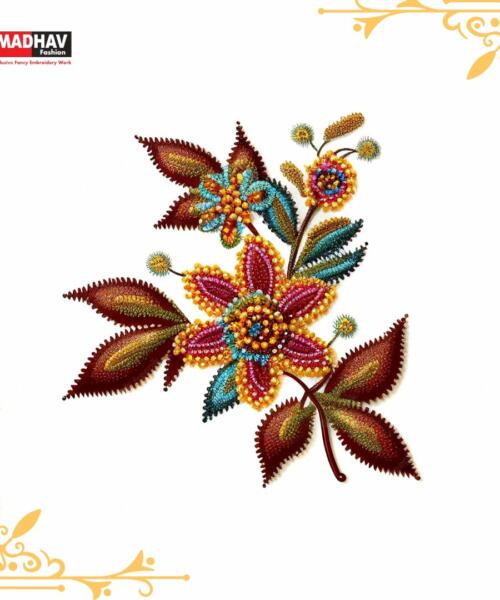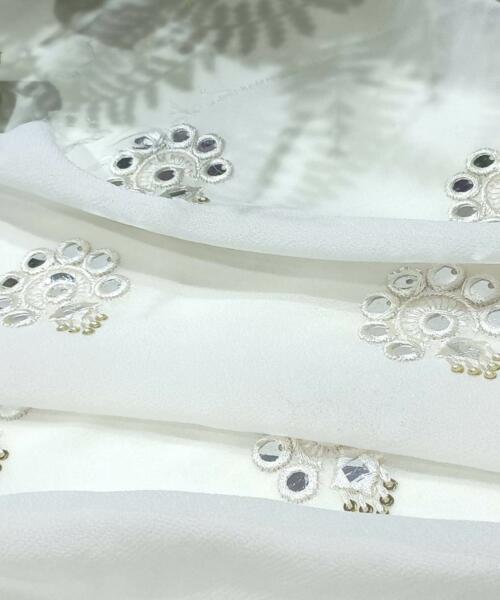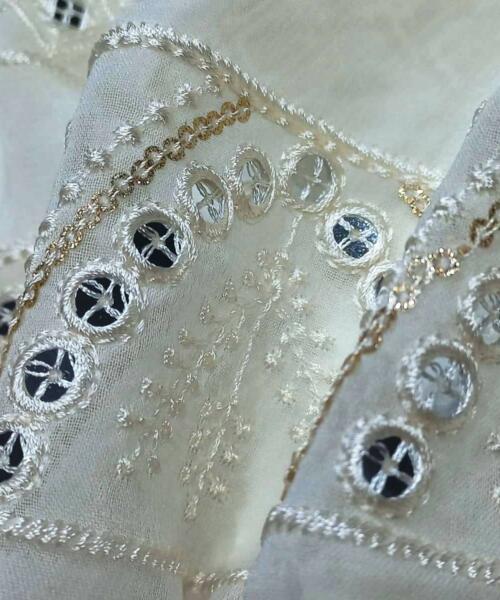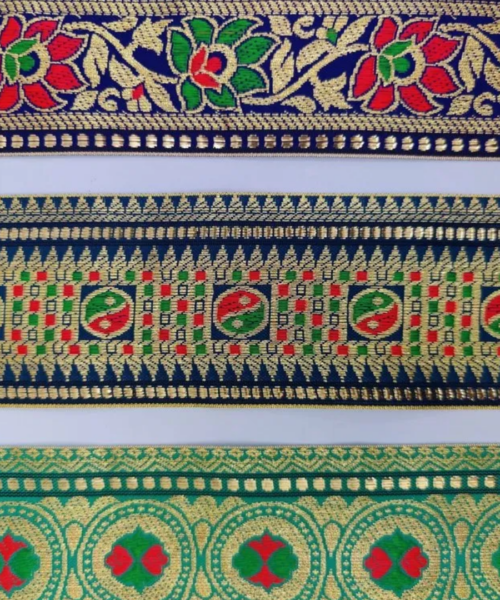Description
Unleash your creativity and add a touch of opulence to your exclusive creations with Madhav Fashion’s exquisite range of Premium Dyeable Designer Embroidered Lace Fabrics.
Buy Dyeable Designer embroidered lace fabric
Renowned for their commitment to quality and innovation, Madhav Fashion presents a diverse collection of lace fabrics that redefine luxury and sophistication. ____________________________________
- Buy Sequins fabric at Wholesale rate
- Buy Pink Sequins Fabric Online In India
- Buy Glamorous Sequins Embroidery on Net fabric
____________________________________
New Products Highlights:
Dyeable Elegance: Madhav Fashion introduces a series of dyeable lace fabrics, allowing you to customize and create bespoke designs that perfectly match your vision. The ability to dye these fabrics opens up a world of possibilities for fashion designers and DIY enthusiasts alike.
Designer Embroidery: Immerse yourself in the intricate beauty of designer embroidery. Madhav Fashion’s latest collection features meticulously crafted designs that showcase the expertise of skilled artisans. The embroidery adds a layer of sophistication, making these lace fabrics perfect for high-end fashion projects.
Versatile Selection: Whether you’re working on bridal couture, evening gowns, or stylish accessories, Madhav Fashion has a lace fabric to suit every occasion. Explore a versatile selection of patterns, motifs, and textures that cater to a wide range of design preferences.
Luxurious Feel: Experience the luxury of premium materials. Madhav Fashion’s lace fabrics are carefully chosen for their superior quality, ensuring a luxurious feel that complements the overall elegance of your creations. These fabrics are designed to not only look stunning but also feel comfortable against the skin.
Exclusive Creations: Stand out from the crowd with lace fabrics that exude exclusivity. Madhav Fashion’s commitment to producing unique and sophisticated textiles allows you to elevate your designs and create pieces that leave a lasting impression.
How to Order: Visit Madhav Fashion’s online platform to explore their latest collection of Premium Dyeable Designer Embroidered Lace Fabrics. The user-friendly interface makes it easy to browse through the catalog, select your desired fabrics, and place your order with just a few clicks.
Madhav Fashion invites you to explore a world of creativity and luxury with their new collection of Dyeable Designer Embroidered Lace Fabrics. Elevate your designs, express your unique style, and make a statement with lace fabrics that embody the perfect blend of craftsmanship and innovation. Embrace the artistry of fashion with Madhav Fashion.
1. What is the embroidery lace called?
The term used for embroidered lace is often simply referred to as “lace.” Lace is a delicate fabric characterized by openwork patterns created through the art of embroidery. It is a timeless and intricate textile that has been used for centuries to enhance the beauty of garments, accessories, and even home décor items.
2. What kind of fabric is used in lace?
Lace is typically crafted from various types of fabrics, including cotton, silk, linen, or synthetic materials like nylon. The choice of fabric can influence the texture, drape, and overall aesthetic of the lace. Different fabrics offer unique characteristics, allowing designers and artisans to create a diverse range of lace styles suitable for various applications in the world of fashion and design.
3. What is the price of lace fabric?
The price of lace fabric varies widely depending on factors such as the type of material used, the intricacy of the embroidery, and the brand’s reputation. Generally, handmade and intricately embroidered lace tends to be more expensive than machine-made lace. Prices can range from affordable to high-end, offering options for different budgets and design requirements.
4. What is the most expensive lace?
The most expensive lace often involves intricate handwork, premium materials, and exclusive designs. Handmade laces like Chantilly lace and Alençon lace, known for their meticulous craftsmanship, are among the priciest. Additionally, laces created by renowned designers or those with historical significance can command high prices in the luxury market.
5. What is embroidered fabric called?
Embroidered fabric is simply referred to as “embroidery” or “embroidered fabric.” This term encompasses a wide range of textiles that have been adorned with decorative stitching, creating patterns, motifs, or intricate designs on the fabric’s surface. Embroidery adds a unique and personalized touch to fabrics, making them suitable for various applications in fashion, home décor, and artistic expressions.
6. What are the 5 types of embroidery?
The five main types of embroidery are:
Flat Stitch Embroidery: Basic stitches like running stitch and satin stitch.
Crewel Embroidery: Typically done with wool on fabric, often with a slightly raised surface.
Cross-Stitch Embroidery: Formed by crossing stitches to create a pattern.
Counted Thread Embroidery: Involves counting threads to create precise patterns. Canvas Work Embroidery: Stitching on a canvas or mesh fabric, often used in needlepoint.
7. Is lace a type of embroidery?
Yes, lace is a type of embroidery. It involves the creation of openwork patterns and designs on a fabric surface through the art of stitching. The intricate patterns in lace are achieved through various embroidery techniques, making lace a specific and beautiful subset of embroidered textiles.
8. What is the softest lace?
The softness of lace depends on the fabric used. Generally, lace made from high-quality silk is known for its exceptional softness. Silk lace drapes elegantly, feels luxurious against the skin, and adds a touch of opulence to garments. Chantilly lace, often crafted from silk, is renowned for its softness and delicate nature.
9. Why is lace fabric good?
Lace fabric is highly valued for its aesthetic appeal, versatility, and breathability. Its openwork patterns add a touch of elegance to garments and accessories, making it a popular choice for formal wear and lingerie. Additionally, the lightweight and airy nature of lace contributes to its comfort, making it suitable for various climates and seasons. Lace’s timeless charm and ability to enhance the visual appeal of any design make it a sought-after fabric in the world of fashion and design.
10. Why is lace so expensive?
Lace can be expensive due to several factors. Handcrafted lace, especially intricate designs and patterns, requires skilled artisans, contributing to higher labor costs. The use of premium materials like silk or fine cotton also adds to the expense. Additionally, the exclusivity of certain lace designs, historical significance, or association with renowned designers can increase the overall cost of lace fabrics in the luxury market.
11. Which fabric is costly?
Costly fabrics often include luxurious materials like silk, velvet, and cashmere. Silk, in particular, is renowned for its smooth texture, natural sheen, and breathability, making it a sought-after but relatively expensive fabric. The cost of fabric is influenced by factors such as the quality of the material, the manufacturing process, and any additional embellishments or treatments applied to enhance its appeal.
12. Is lace a fabric or textile?
Lace is a textile, and more specifically, it is a type of openwork fabric. Textiles encompass a broad category of materials used for making fabrics, and lace falls within this classification due to its unique structure, which involves the creation of intricate patterns through embroidery.
13. What country is famous for lace?
Belgium and France are particularly renowned for their lace-making traditions. Belgian lace, including varieties like Valenciennes and Bruges, is celebrated for its fine craftsmanship. French lace, such as Chantilly and Alençon, is highly esteemed for its elegance and intricate designs. These countries have historical significance in the production of high-quality lace.
14. Is lace a luxury?
Yes, lace is often associated with luxury due to its intricate craftsmanship, delicate nature, and historical significance. Lace has been a symbol of elegance and refinement for centuries, making it a popular choice for luxury fashion, bridal wear, and high-end lingerie. The timeless appeal and intricate detailing of lace contribute to its status as a luxurious textile.
15. What lace size is best?
The ideal lace size depends on the intended use and design preference. Smaller lace patterns, such as delicate floral motifs, are often favored for intricate detailing on garments and accessories. Larger lace patterns can make a bold statement and are suitable for creating dramatic effects in fashion design. The best lace size is subjective and varies based on the specific aesthetic goals of the designer or individual.
16. Which country is famous for embroidery?
Various countries are celebrated for their rich embroidery traditions. India, with its diverse cultural heritage, is renowned for intricate and colorful embroidery styles such as Zardozi and Kantha. China has a long history of silk embroidery, while Italy is known for its exquisite Renaissance-era embroidery. Each country’s embroidery tradition reflects its unique cultural influences and artistic expressions.
17. Which cloth is best for embroidery?
Cotton, linen, and silk are popular choices for embroidery due to their smooth surfaces and ability to hold stitches well. The fabric choice depends on the desired outcome—cotton for a classic look, linen for a rustic feel, and silk for a luxurious touch. Choosing the best fabric for embroidery involves considering the project’s purpose, design, and personal preferences.
18. What are the 3 special kinds of embroidery?
Three special kinds of embroidery include:
Goldwork Embroidery: Involves using gold or metallic threads to create opulent designs. Couching Embroidery: Utilizes additional threads laid on the fabric surface and stitched in place.
Blackwork Embroidery: Traditionally worked in black silk thread, creating intricate geometric patterns. Embroidery enthusiasts often explore these special techniques to add unique textures and visual elements to their creations.


